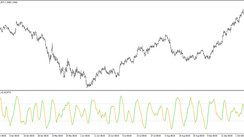As a newcomer to day trading, it's natural to be uncertain about the optimum number of trades to make daily. Fears of overtrading or under-trading can creep in, and you might wonder if there's a golden mean for trading volume.
The straightforward answer is to execute trades exactly as guided by your tried-and-tested trading strategy. However, if you're pondering over- or undertrading, it's probable that you haven't established a foolproof strategy yet. To determine your trade volume, you first need to cultivate a strategy that will guide your activity level.
Major Takeaways
For aspiring day traders, avoiding the extremes of over- or under-trading is crucial, but a solid strategy may not yet be in your toolkit if you're a novice.
Since day traders respond to the signals offered by their strategies, the quantity and frequency of trading will oscillate daily.
Trades conducted outside a validated strategy—whether excessive or too few—are prone to underperformance.
If you're yet to devise, validate, and exercise a day trading strategy, focus your efforts on creating one that aligns with your temperament and lifestyle.
Your Strategy Determines Trading Frequency
A well-articulated strategy provides explicit guidelines on when to enter the trade, the conditions that should be met, and when to exit, whether in profit or loss. Because day traders follow the signals their strategies generate, trading volume and frequency are subject to daily fluctuations.
For instance, a strategy predicated on following trends could trigger multiple trades on a day when the asset being traded exhibits a distinct trend. Conversely, on a day when the asset's price movement is stagnant or confined to a range, the same strategy might generate little to no trading signals. Meanwhile, a strategy focused on range trading is likely to generate more trade signals on days with sideways price movements and fewer signals when the asset follows a specific trend.
Important
Your strategy should function as a sieve, filtering the frequency of your trades. Possessing strategies for both trending and ranging environments—with a mechanism to determine which one to apply—will ensure you have a pool of potential trades nearly every day.
How Many Trades are Too Many?
Your strategy should be the guiding beacon dictating your trading frequency. However, it's essential to be aware of a prevalent risk in day trading – overtrading. Overtrading can be best defined as the act of making more trades than what your strategy outlines. It typically stems from an impulsive reaction to market conditions or a lack of discipline. This can happen when day traders, spurred by boredom or the thrill of the trading environment, fall into the trap of executing trades that are not backed by their strategic guidelines.
These extra trades, undertaken outside the framework of a proven strategy, are generally prone to underperform. Not only can they chip away at your profitability, but they can also cause an unnecessary surge in commission costs. These unneeded trades can also emotionally drain traders and significantly increase financial risk.
Commission costs, which are often considered a barrier to profitability for day traders, usually become a concern when a trader is overtrading or utilizing an ineffective trading method. With a disciplined, strategically-sound approach, commission costs shouldn't pose a significant challenge. A carefully adhered-to strategy will ensure that each trade justifies the associated commission cost.
Are Fewer Trades Better?
Resist the temptation to assume that if overtrading is bad, under-trading must be good. It's not that straightforward. The key lies in adhering to your strategy. When traders under-trade, they typically ignore the signals embedded within their strategic framework. This usually happens due to a fear of losses, hesitancy, or simply not being prepared to trade at that given moment.
Sometimes, traders may be working with a strategy that appears robust in theory but does not translate well into the practical realities of the dynamic trading world. Such strategies, despite their theoretical appeal, might be difficult to execute and lead to under-trading.
It's a common misconception among traders that under-trading is a safer bet than overtrading. This belief is misguided. If your strategy shows a tendency to win over a series of trades, then skipping trades based on fear or hesitancy reduces your potential for success.
Consider this: if your strategy shows a winning ratio of 55%, by skipping a trade, statistically, you're more likely to miss a winning trade than a losing one. Therefore, it's essential to maintain a close eye on your performance, ensure your strategy is yielding consistent wins, and religiously follow the trades your strategy suggests. Remember, neither overtrading nor under-trading will serve your best interest. The golden rule is to stick to your strategy.
Valuable Insight
Assume you have a strategy that boasts a 55% success rate. By bypassing a trade, you are more likely to miss out on a winning trade than a losing one. Monitor your performance, ensure your strategy is consistently successful, and follow the trades your strategy recommends.
Crafting Your Trading Strategy
If you're at the early stages of your day trading journey and haven't yet established, tested, and honed a day trading strategy, your priority should be the development or selection of a strategy that aligns with your personality traits and lifestyle preferences. A well-crafted strategy takes into account your financial goals, risk tolerance, and time commitment, along with the market's volatility and liquidity conditions.
For instance, you might consider day trading strategies tailored for the opening hour of the U.S. market. These types of strategies, often known as 'opening range breakouts,' typically involve executing one to five trades within that brief window. This approach is particularly suited to traders who prefer a condensed trading schedule and a short, intense burst of market activity.
If you're more inclined towards trading throughout the day, it's beneficial to develop adaptive strategies that can accommodate various market conditions. Such flexible strategies are a must for day traders given the dynamic nature of the financial markets. During a trading day, you'll encounter shifting scenarios as different stocks fluctuate in their level of volatility, various assets trend or range, and trading volumes increase or decrease.
Creating a dynamic strategy involves keen observation, ongoing learning, and fine-tuning your approach based on market feedback. Continuously updating your knowledge about market trends, understanding different trading instruments, and learning about technical indicators are all critical components of this process.
Once you've developed a strategy that aligns with your trading style and goals, it's vital to validate its effectiveness. This involves backtesting your strategy against historical data to ensure it would have generated profitable trades in the past. But remember, past performance is not a guarantee of future results. Therefore, it's also essential to practice with real-time data, using a demo account or paper trading, to ascertain you can implement it efficiently under live market conditions.
If your strategy proves to be consistently profitable during testing and practice, it will serve as your roadmap, guiding you on how much to trade. Adhere strictly to its instructions, as deviating by overtrading or under-trading can both lead to adverse outcomes. It's worth repeating: hold off on live trading until you have a strategy that provides clear, actionable signals on when to trade.





